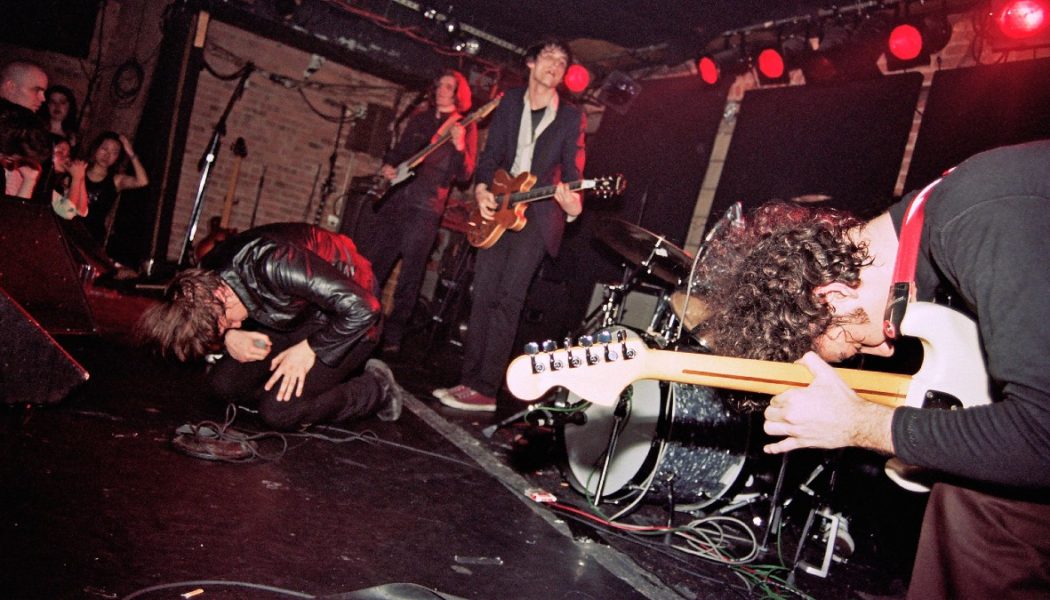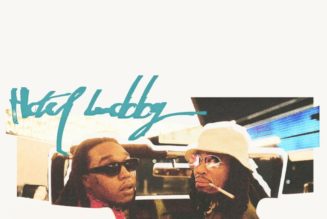
This review is part of our coverage of the 2022 Sundance Film Festival.
The Pitch: Pitched between the doomsday-prepping of Y2K and the existential horror of 9/11, 2000s New York was also home to another seismic change in American culture: the burgeoning indie-rock scene, where dingy clubs on the Lower East Side played home to acts like Interpol, The Strokes, The Moldy Peaches, and the Yeah Yeah Yeahs.
That’s the hazy, deafening, beer-sticky stage on which Dylan Southern and Will Lovelace (who previously directed the LCD Soundsystem doc Shut Up and Play the Hits) operate for Meet Me in the Bathroom, less an adaptation of Lizzy Goodman’s 2017 oral history of the same name than a living companion piece.
Related Video
Comprised almost entirely of archival footage stitched together by new and archival voiceover interviews from many of the parties involved, including Karen O, James Murphy, Paul Banks, and more, Meet Me in the Bathroom gives you a backstage pass to this lightning-in-a-bottle moment in music history.
Is This It: The aughts gave birth to a new kind of rock star, usually borne of the idle rich kids and blue-collar post-punks of late ’90s Manhattan: creatively ambitious but socially shy, bristling against the spotlight that fame gave them even as their stars rose to heavenly heights.
It’s here that Southern and Lovelace turn the majority of their eye, Meet Me in the Bathroom chiefly concerned with the bands that rose to fame from the dark, isolated incubator that was NYC’s Lower East Side. The Moldy Peaches cheekily plink out songs in their studio apartment; Karen O develops her onstage persona from a withdrawn acoustic guitar player to a wailing pop-punk diva; The Strokes face a meteoric rise that immediately plants the ‘future of music’ label on them, with all the pressure that entails.
(Much real estate is dedicated to footage of Julian Casablancas, The Strokes’ boy-genius frontman, shrugging and withdrawing from the weight of their stardom: he evasively tells one interviewer, “if I heard about a band like us, I’d think they were assholes.”)
Their tales are largely disconnected, which is a bit formally frustrating; Southern and Lovelace wander from one band to another and back again like a drunken extrovert at a house party, making it hard to really glom onto one particular band’s journey. However, in focusing on how all of these bands respectively progressed through the most fertile years of their musical careers (1999-2004), we see not just how they changed pop culture, but how the world changed around them.
Occasionally, the filmmakers turn away from the bands to remind us that yes, we were all freaked out about Y2K and stocking MREs in wait for the coming apocalypse; or that the horrors of 9/11 turned their devil-may-care punk shrugs into a call for humanity. Most haunting is the arrival of Napster and the mp3 craze, a phenomenon that mostly rattles Murphy, at this point a sound engineer who’s “wasted the first thirty years of his life”; he’d channel that over-it malaise into the irony-drenched lyrics and disco-synth beats of LCD Soundsystem.
[flexi-common-toolbar] [flexi-form class=”flexi_form_style” title=”Submit to Flexi” name=”my_form” ajax=”true”][flexi-form-tag type=”post_title” class=”fl-input” title=”Title” value=”” required=”true”][flexi-form-tag type=”category” title=”Select category”][flexi-form-tag type=”tag” title=”Insert tag”][flexi-form-tag type=”article” class=”fl-textarea” title=”Description” ][flexi-form-tag type=”file” title=”Select file” required=”true”][flexi-form-tag type=”submit” name=”submit” value=”Submit Now”] [/flexi-form]







![Watch DJ Diesel’s Epic 2019 Lollapalooza Set [Exclusive]](https://www.wazupnaija.com/wp-content/uploads/2020/10/watch-dj-diesels-epic-2019-lollapalooza-set-exclusive-327x219.jpg)


Tagged: Alternative Music, FEATURES, Film, Film Reviews, Meet Me In the Bathroom, music blog, Reviews